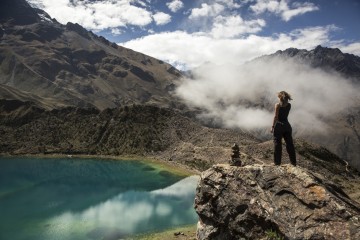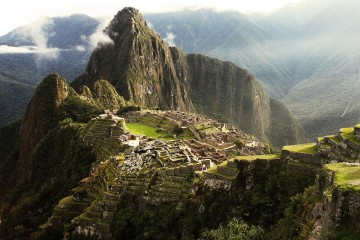Machu Picchu might be one of the world's most recognisable archaeological sites, and the most visited in South America. Yet, the logistics of actually getting there often leave many scratching their heads. Do you need to trek for days through the Andes? Can you bring your luggage? How long can you stay inside the citadel once you've arrived? To dispel some myths and clear up confusion, we have compiled this guide for first-time visitors, providing all the essential information on how to visit Machu Picchu, along with a few personal highlights from our team.
Content Guide:
What is Machu Picchu?
How to Visit Machu Picchu: Tickets and Circuits
Getting There: Trains, Buses, and Treks
Luggage and Practicalities
How Long to Spend and What You’ll See
Is It Worth Combining Circuits?
Do You Need a Guide?
Best Time to Visit
Frequently Asked Questions
Let’s start with the most essential tidbit of info.
What is Machu Picchu?
You've likely heard of Machu Picchu mentioned in almost every piece of South American travel literature, but it's not always clear what it actually is. In a nutshell, Machu Picchu is a 15th-century Inca citadel built during the reign of Emperor Pachacuti. It sits relatively high in the Andes, in a valley that sits at an altitude of 2,400 metres (7,800 feet). The picturesque site is home to temples, terraces, plazas, and living quarters, all crafted with the Incas' remarkable stonework, also seen in Cusco's main plaza, that still stands solid centuries later.
It was never a huge city, by any stretch. Archaeologists believe just a few hundred people lived there at any one time, mostly members of the Inca elite and the workers who supported them. Rather than being a permanent settlement, the citadel is thought to have been a seasonal royal retreat or used for prominent ceremonies. Abandoned after the demise of the Inca Empire, it lay unknown to the outside world until the early 1900s, when explorer Hiram Bingham stumbled upon it. Bingham brought international attention to the site and helped turn it into a tourist attraction.
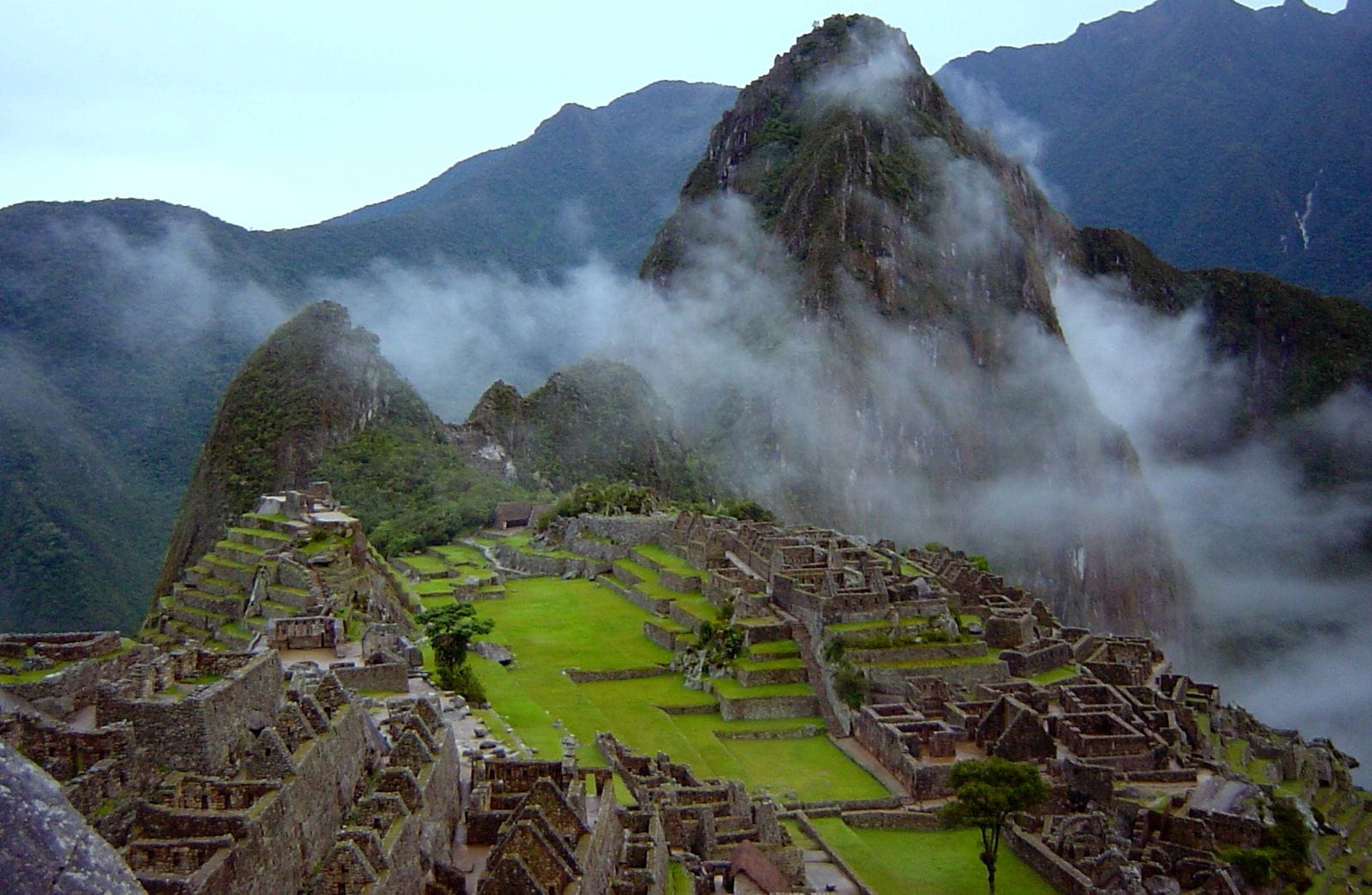
The splendour that is Machu Picchu, a UNESCO Heritage Site and one of the New Seven Wonders of the World. Huayna Picchu, behind it, shrouded in morning mist.
How to Visit Machu Picchu: Tickets and Circuits
All visits to Machu Picchu require a pre-purchased ticket, and in recent years, the ticketing system has undergone restructuring. Tickets are sold through the Peruvian government platform and sell out months in advance, especially at the peak of travel season. In 2025, the site features 10 different visitor routes, each one following a specific path through the ruins. This helps protect the fragile stonework and ensures that the enormous daily crowds are spread evenly across the site. This new system has made visiting even more enjoyable, as you're no longer having to elbow your way through crowds at the most iconic spots or busiest times.
Routes are grouped into three main circuits. Panoramic circuits take you to classic viewpoints, the so-called “postcard” shots of the ruins framed by Huayna Picchu in the background. Classic circuits include the key temples, plazas, and residential sectors, while the more exclusive Royalty circuits give access to extra areas such as the Temple of the Sun or the Intihuatana stone. Entry is timed, and each ticket allows between 2.5 and 4 hours, depending on the route. If you wish to spend several hours at the site, you can purchase several different circuits to explore different sections at different times. We'll share our thoughts on this later.
Prices vary depending on nationality and whether you add one of the optional extras available. Standard entry costs around 40-60 US dollars for foreigners, depending on the circuit you choose. The most important advice we can offer is to book early. Leaving it until you are in Peru almost guarantees disappointment, especially during the hotly contested northern summer months of June to September.
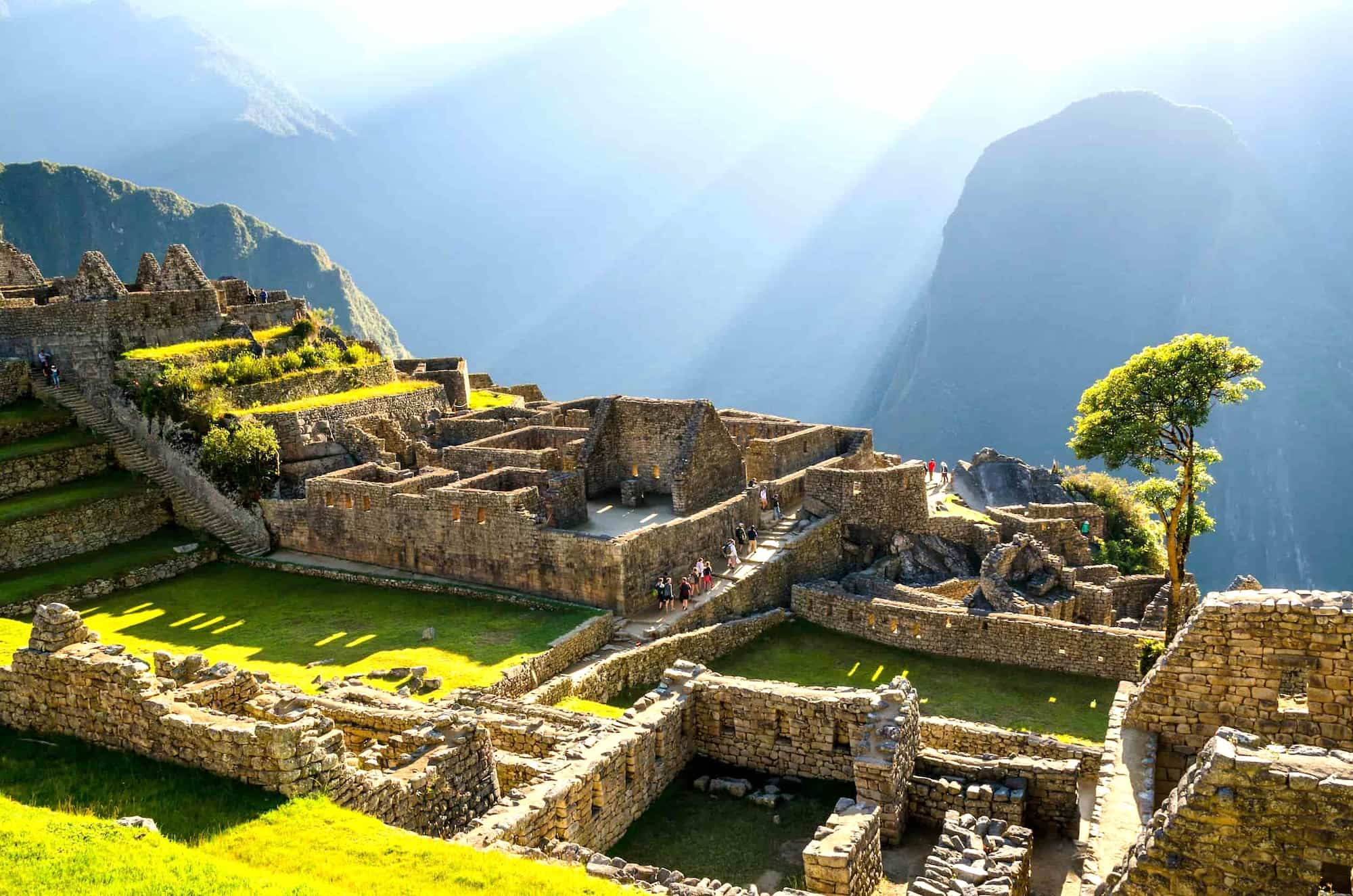
Machu Picchu is the most visited site in Peru, and entry tickets often sell out months in advance, especially in the dry season.
Getting There: Trains, Buses, and Treks
For most people, reaching Machu Picchu involves a combination of train and bus. Two rail companies, Peru Rail and Inca Rail, run services from Cusco and the Sacred Valley to Aguas Calientes, the small town at the base of the mountain. The train journey itself is part of the experience, winding past valleys, peaks, and gorges, before depositing you in a bustling town full of hotels and restaurants. From here, shuttle buses zigzag up the steep hillside in about half an hour, dropping you at the entrance gate. Some prefer to walk this final stretch, a climb of around ninety minutes that can really build up anticipation. If you are keen on this, ensure you are acclimated to the altitude, though, as the walk is "breathtaking" in every way.

Taking the Hiram Bingham train is the most luxurious way to reach Machu Picchu.
Then there are the trekking routes, which are an experience in themselves. The most famous is the Classic Inca Trail , a guided 4-day hike along original Inca pathways that ends at the Sun Gate with the first view of the citadel at dawn. We include this option in our Signature Peru with Classic Inca Trail tour.
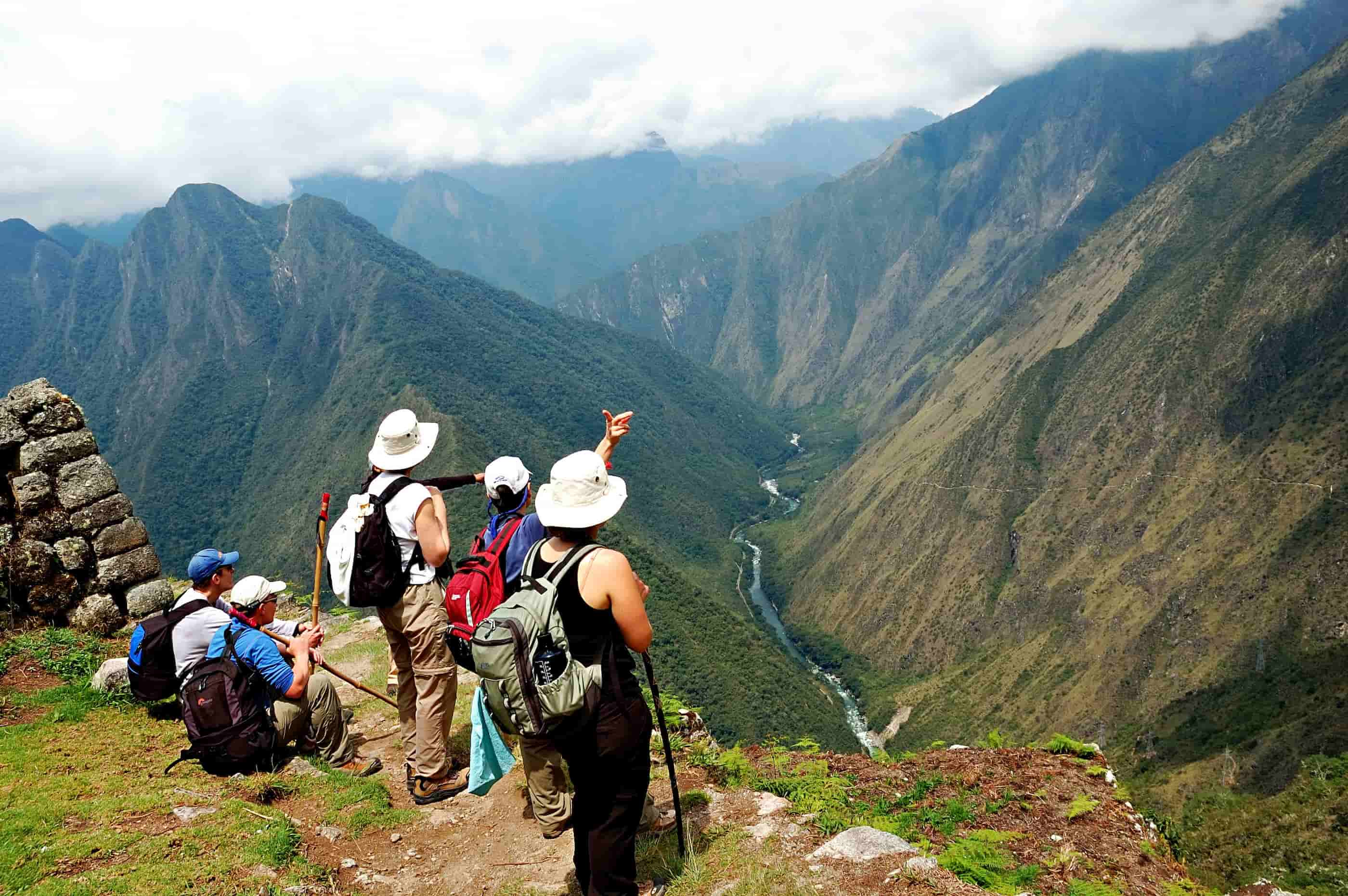
Permits for the Classic Inca Trail are limited, making this trek one of the most sought-after journeys to Machu Picchu.
Permits are tightly controlled and sell out quickly, although plenty of alternatives exist. The most popular is the Salkantay trek, a demanding five-day route that crosses high passes, and the Lares or Choquequirao treks, which are less crowded and offer different cultural and scenic encounters. All meet at Machu Picchu, and all retrace the steps of the Incas.
“Nothing compares to the moment you reach the Sun Gate after a couple of seriously spectacular hiking days. Before the trains and buses arrive, you get a few precious minutes of silence as the first light touches the citadel. It doesn’t last long, but that stillness is unforgettable.”
- Laura, Viva Expeditions.
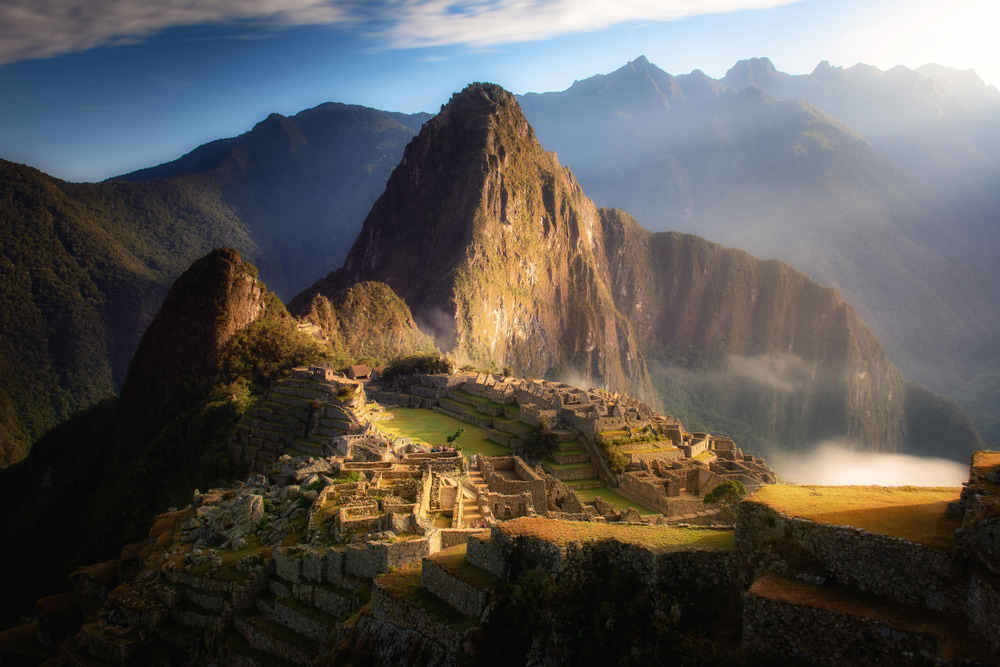
The most unforgettable part, for me, is arriving via the Sun Gate through the Classic Trail at sunrise.
Luggage and Practicalities
One of the common questions is what to do with luggage. Large bags are not allowed into Machu Picchu, and the trains restrict passengers to around five kilograms of hand luggage anyway. The solution is simple: leave your bigger bags at your hotel in Cusco or the Sacred Valley, where staff are used to storing luggage for guests making the overnight (or multi-night) trip. In Aguas Calientes, you'll also find storage facilities, and any extra luggage can be taken directly to your hotel from the train station. If you’re staying in the Sacred Valley before Machu Picchu and continuing on to Cusco afterwards, don’t worry. When you book your Peru trip with us, we’ll handle all the luggage logistics for you.
Inside the ruins, only a small daypack is permitted, so just pack your water, snacks, a camera, and layers for sun or rain.
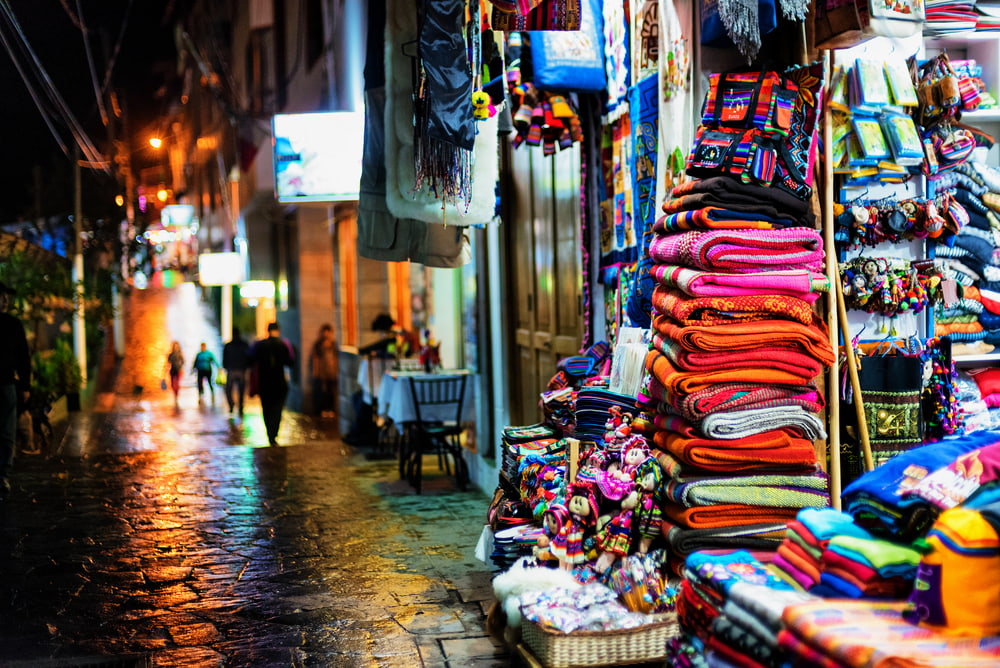
Aguas Calientes is the best base for a leisurely and thoroughly enjoyable visit to Machu Picchu.
How Long to Spend and What You’ll See
The standard entry ticket allows you to spend up to 4 hours at the site, with every circuit limiting the time in which you can complete it. The flow of walking is one-way, and we find the time allotted is ample for each specific section, at leisure. If you book a ticket that includes one of the extra mountain hikes, you will have a bit longer, as these climbs can take two or three hours on top of the main site visit.
The most popular and best option for beginners is Circuit 2 – The Classic Route, which allows 2.5 hours to tour the main areas and is considered the most comprehensive option, offering a fantastic overview of the citadel.
There are a multitude of highlights here. The Temple of the Sun is one of the most finely built structures in the citadel, its curved wall carefully aligned to the solstices. The Temple of the Three Windows frames dramatic views across the mountains. The Main Plaza gives a sense of the urban layout, while the Temple of the Condor showcases the Incas' ability to work with natural rock formations. The Intihuatana stone, thought to have served as a sundial or calendar, is particularly special. Flor, one of our Peru Specialists, always makes a point of explaining it to guests, as she finds that learning the stories behind these features is what makes Machu Picchu more than just a spectacular backdrop.
“The Intihuatana sundial is my favourite part of Machu Picchu. It's one of the few surviving Inca artefacts with a clear astronomical role, and I love seeing guests realise the scale of what they're looking at once they hear the story behind it."
- Flor, Viva Expeditions
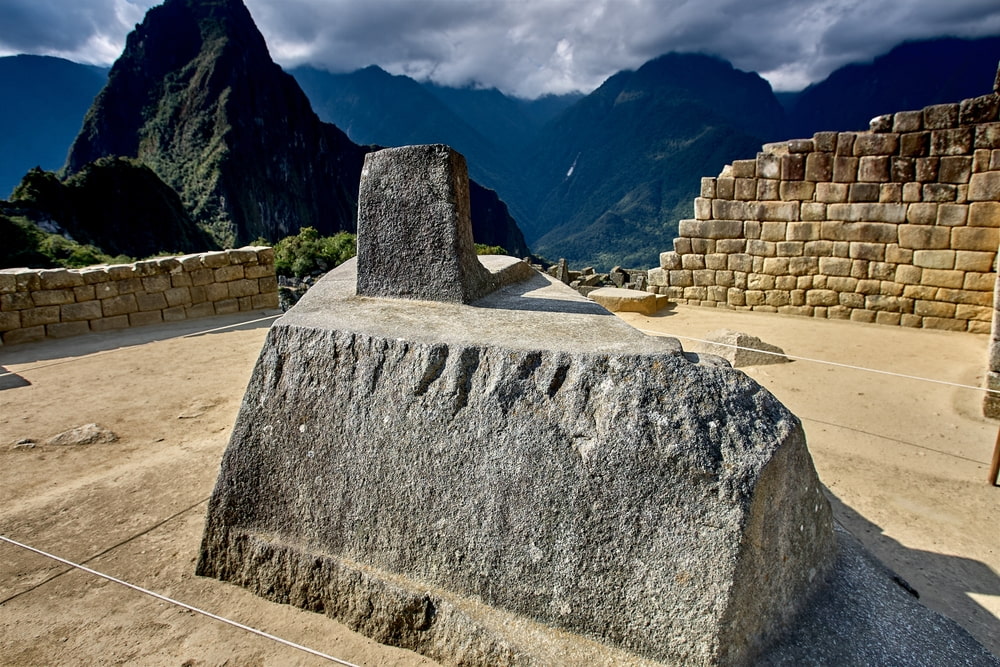
Intihuatana is believed to have been the central highlight in ceremonies surrounding celestial events like the equinoxes.
Is It Worth Combining Circuits?
The short answer is yes, as many of the circuits hone in on specific sections (like the royal buildings or farming parts) or particular sections of hiking trails. The Classic Trail + one extra hike is arguably the most popular option, but it might be a bit too much for beginners and non-hikers.
What many people don't realise before they arrive is that walking around at this altitude can be tiring. You're running on excitement and adrenaline, sure, but the site sits at over 2,400 metres, and even gentle slopes and staircases feel more demanding than expected. In reality, four hours are ideal for exploring the site and six hours we’d consider the absolute maximum. Fatigue will sneak in soon enough!
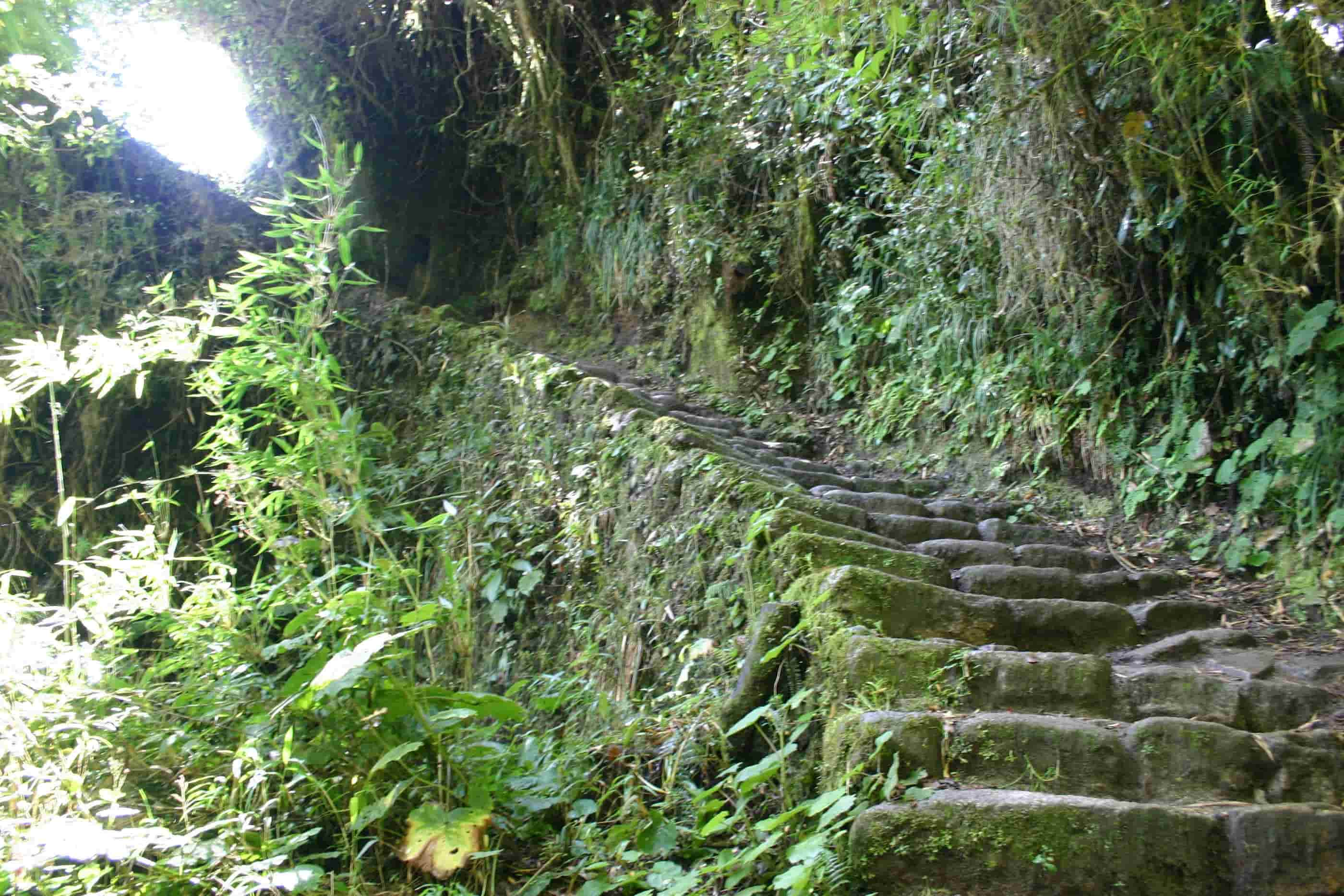
Huayna Picchu and Machu Picchu Mountain hikes are demanding climbs on ancient paths, but the views from the top are unforgettable.
Do You Need a Guide?
Technically, it is not mandatory to hire a guide to enter Machu Picchu, but it is strongly recommended as they turn the experience from a stroll among old, perhaps meaningless ruins into a lesson in Inca life and ingenuity. A good guide can tell you how each sector was used, point out subtle construction techniques, and know the best vantage points for photos. Flor always says that even repeat visitors come away with new insights when they walk the site with a knowledgeable guide.
Best Time to Visit
Machu Picchu has its own microclimate, being at a considerable altitude and in a valley. The dry season from May to September is the most popular, offering reliably clear skies but also the biggest crowds. April and October are excellent shoulder months with fewer visitors and still decent weather. November to March brings heavy rain, swollen rivers, and muddy trails. The scenery can be lush and atmospheric during this period, but the conditions are less predictable.
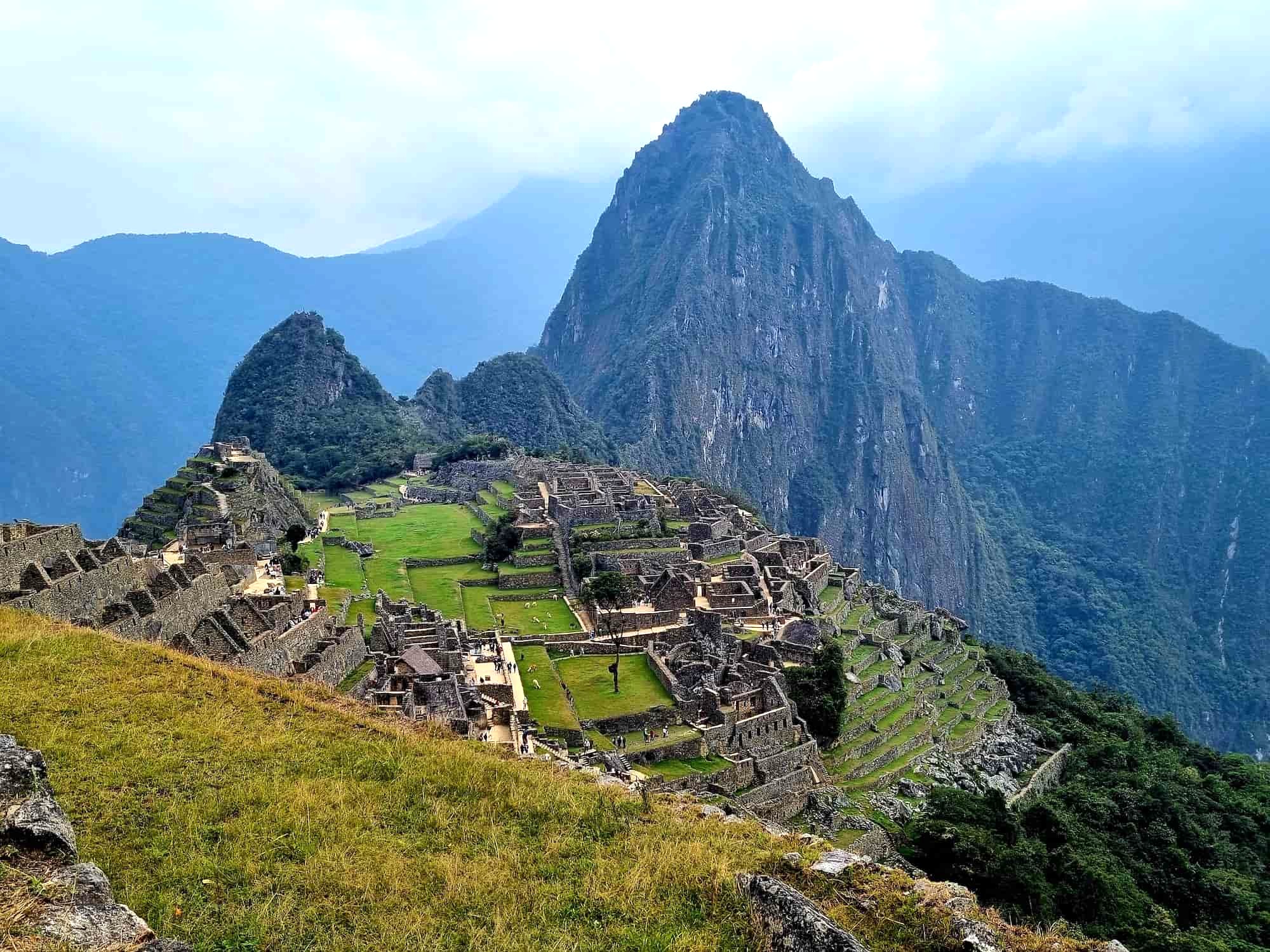
From June to August, Machu Picchu is at its busiest, but the dry season delivers reliably clear skies and views like this.
Frequently Asked Questions
Can you stay overnight near the ruins?
Yes. Aguas Calientes has a wide range of hotels, from simple guesthouses to more upmarket boutique lodges. Staying here allows you to catch the first buses up the mountain in the morning or linger later in the day after the peak crowds have left. Excellent choice!
Huayna Picchu vs Machu Picchu Mountain: What's The Difference?
These are the most popular extra hikes offered, on top of the standard circuit. Both are steep trails inside the sanctuary that require separate permits. Huayna Picchu is the famous sugar-loaf peak you see in classic photos. The trail is narrow and vertiginous, and not for the faint-hearted. Machu Picchu Mountain, on the other side of the site, is a broader but longer climb that rewards you with sweeping views over the citadel and the surrounding valleys.
Can you visit both in one day?
Yes, if you have the correct combination of tickets. It makes for a very long day, so be realistic about your fitness and timing.
What about altitude?
We always recommend guests spend a few days acclimatising before visiting Machu Picchu. The Sacred Valley sits at a lower altitude than Cusco, making it a gentler place to adjust before exploring higher up. Oh, and travel insurance that covers altitude-related issues is highly recommended, especially if you plan to trek.
What do you need at the entrance?
You must bring your passport, as the entry staff check that the name and number match the ticket. Oh, and don't forget to carry a printed copy of your ticket, even if you booked online.
What should you pack?
Sturdy walking shoes, a rain jacket, sunscreen, a hat, water, and snacks. Walking sticks are only allowed if they have rubber tips. Professional camera equipment may require a special permit, so ask us ahead of time.
Are there rules about behaviour?
You bet. Machu Picchu is (luckily) fervently protected, and authorities impose strict rules. Drone flying, smoking, and climbing on the walls are all prohibited. Authorities take violations seriously, and there have even been cases of tourists being fined for behaving inappropriately.
What else can I do besides visiting Machu Picchu?
LOTS! While Machu Picchu is a rightful highlight, it is far from the whole story. The surrounding Sacred Valley is full of Inca sites, colourful markets, and small towns that are well worth your time. Places like the Ollantaytambo fortress show the scale of Inca engineering on a grand military site, while the Maras salt ponds and the circular terraces of Moray show just how advanced their farming techniques were. All of these can be visited as part of a wider itinerary, and together they add priceless context to what you’ll see at Machu Picchu.
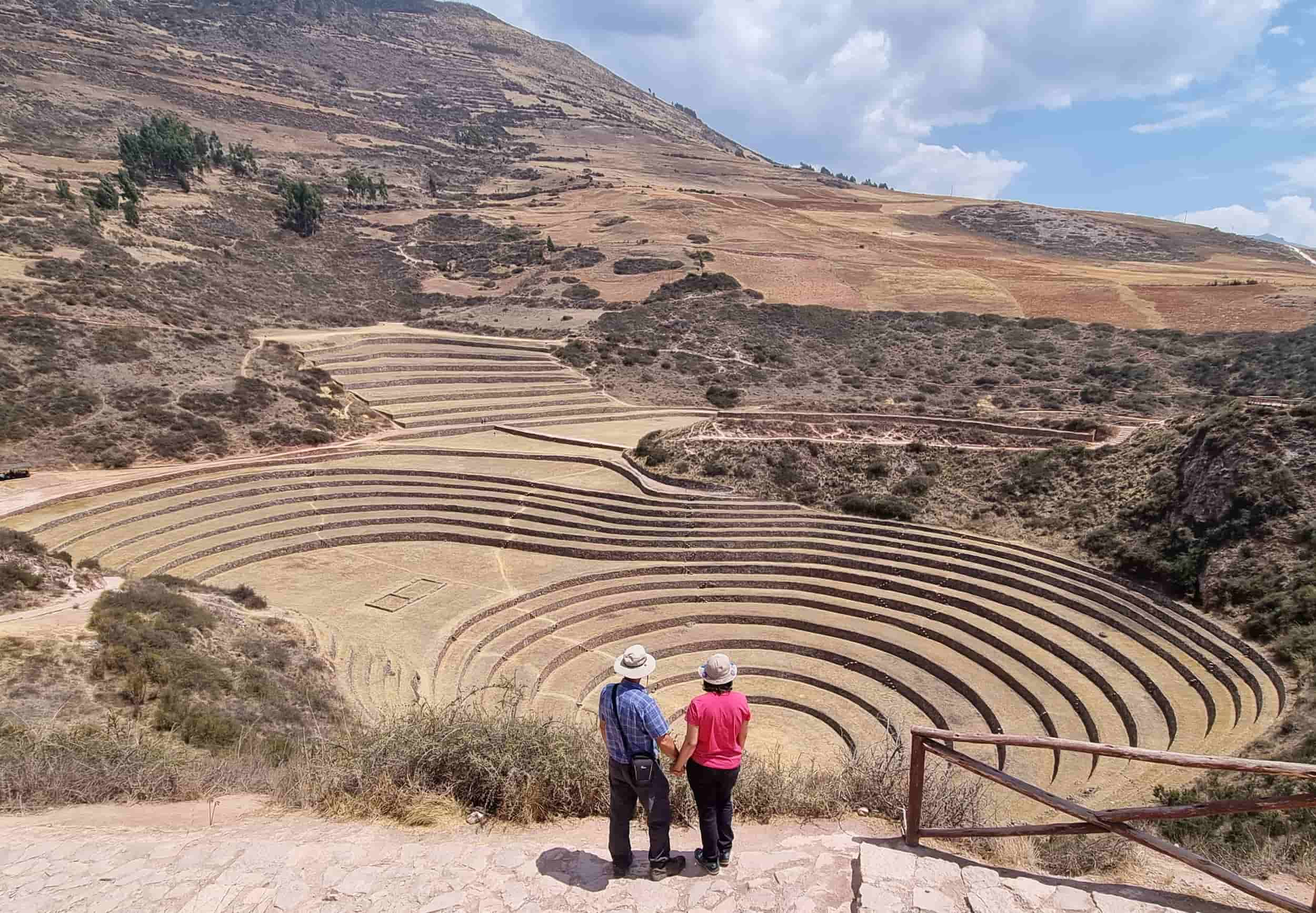
The circular terraces of Moray, thought to have been an Inca agricultural laboratory where different crops were tested at varying altitudes and microclimates.
Cusco itself is another essential stop, with cobbled streets, lively plazas, and a blend of Inca and Spanish history. At Viva, we always encourage guests to think of Machu Picchu not as a one-off day trip, but as the centrepiece of a more comprehensive journey through Peru.
If you want a deeper dive into the culture, our Signature Peru trip combines Cusco, the Sacred Valley, and Machu Picchu into a nine-day adventure, while our more active Signature Peru: Hike, Bike and Foodie Delights adds cycling, hiking and foodie experiences into the mix. Both itineraries are designed to give you the full Inca experience, with time to enjoy the scenery and culture around the citadel as much as the site itself.
If you have more time, there are outstanding extensions beyond this specific region. Arequipa and the Colca Canyon offer striking volcanic scenery and the chance to watch condors soar at sunrise. And in the other direction, you have Northern Peru, where ancient mud cities and world-class surfing beaches make for an epic seaside escape. Pairing these with Machu Picchu would give you a fantastic overview of Peru’s broader culture and its sensational landscapes.
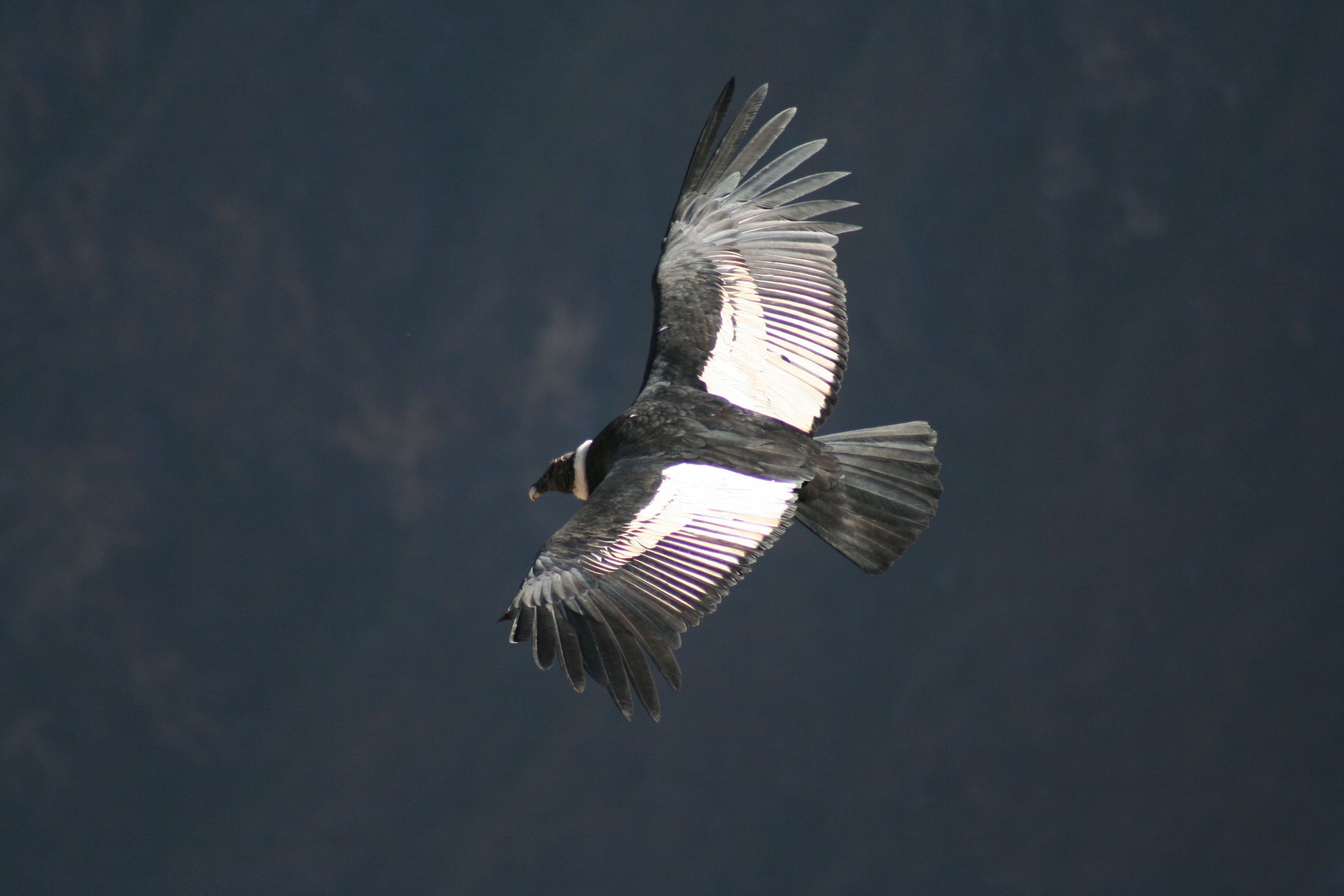
Condors are a highlight of the Colca Canyon, where these giant birds with wingspans of over three metres often glide on the morning thermals.
Working out how to visit Machu Picchu can feel like a puzzle, but once you understand the ticket system, the transport options, and the practicalities, it becomes far less daunting. No matter which options you go for, take your time, prepare well, and you will find the experience both manageable and memorable.
At Viva, we can help you plan your Machu Picchu visit of a lifetime. Because this is what travel should feel like.
Contact our Destination Specialists.
> See all Peru Tours
Laura Pattara
Laura Pattara writes for Viva Expeditions with a special love for all things Latin America. She had guided overland tours across the continent, reached Machu Picchu five times on foot, and even dressed up as a giant toucan for Carnaval. With a degree in languages and two decades of global travel experience behind her, Laura has a long-standing love for the Andes, soaring condors, and a truly delicious empanada.
|













